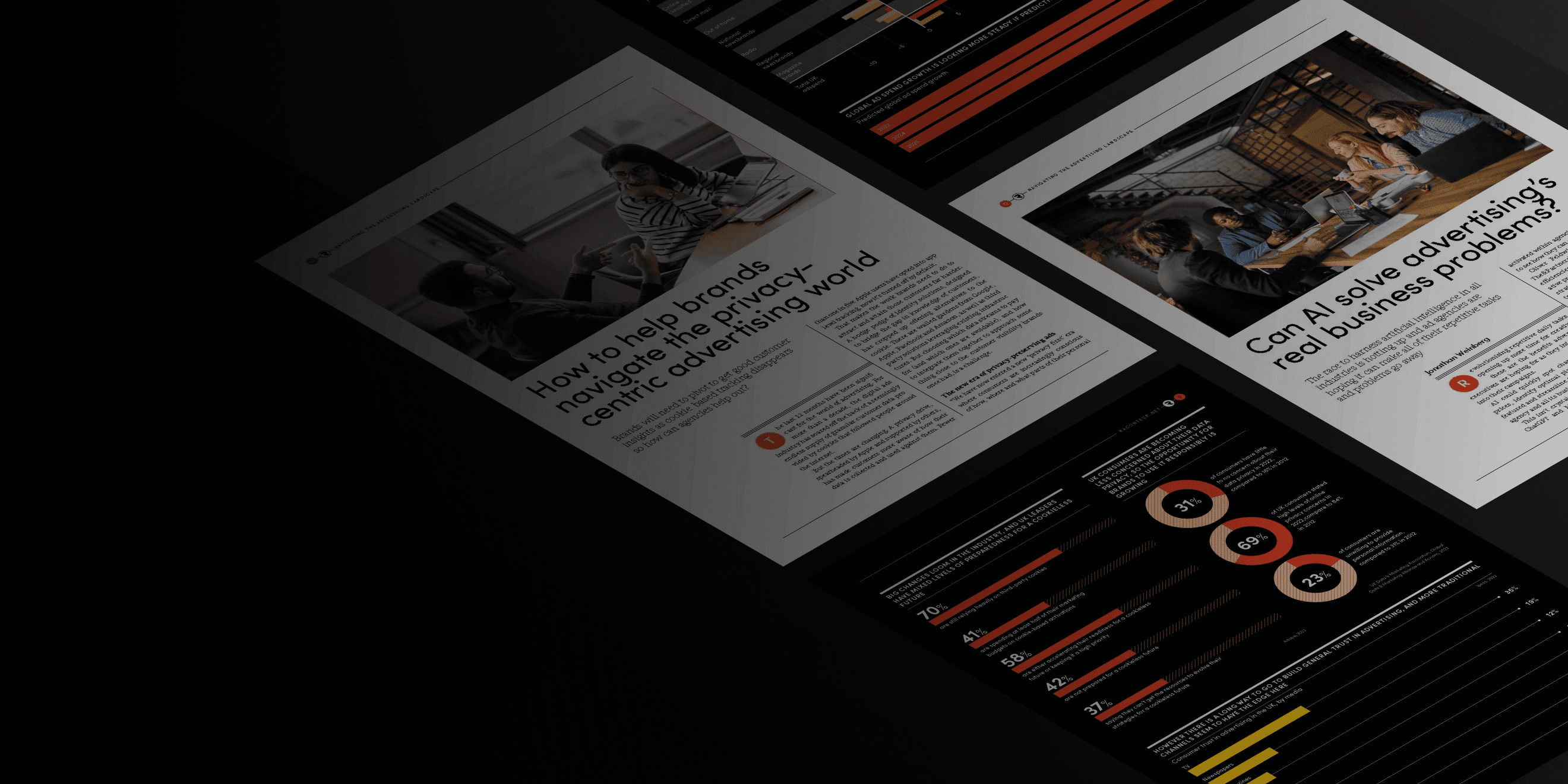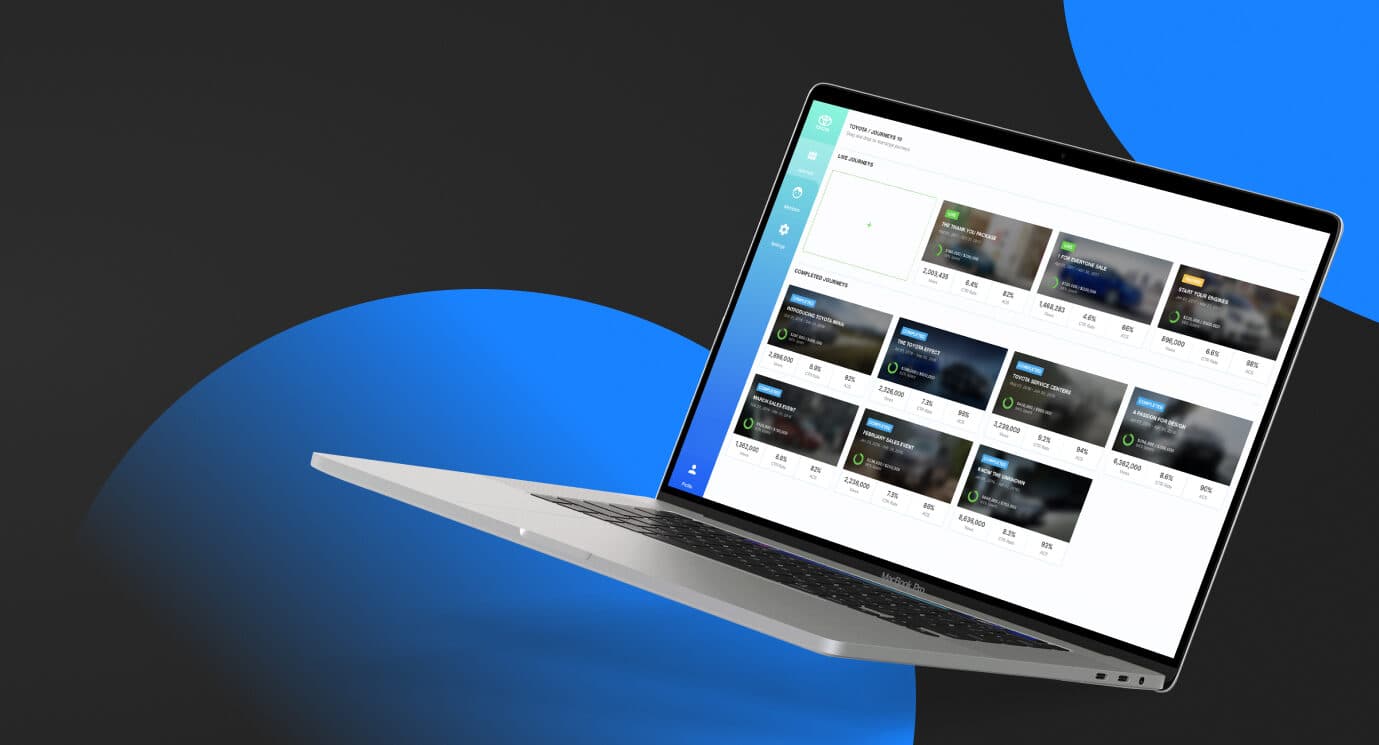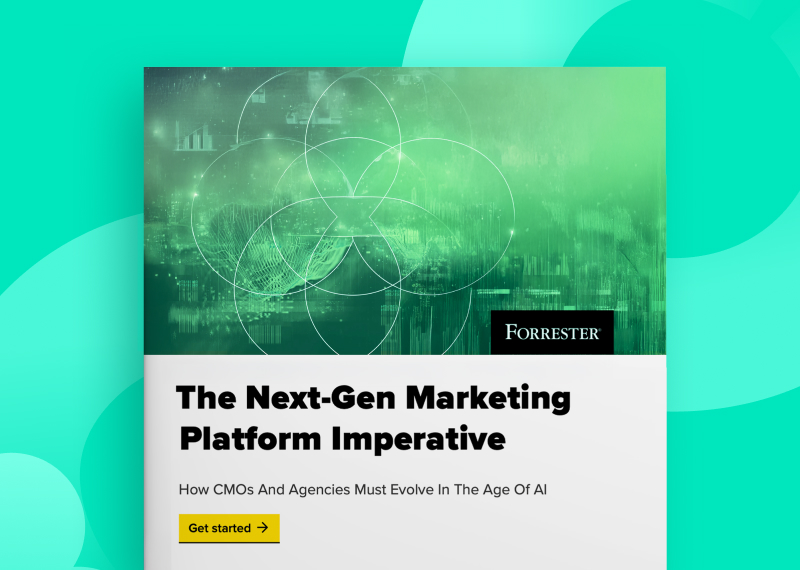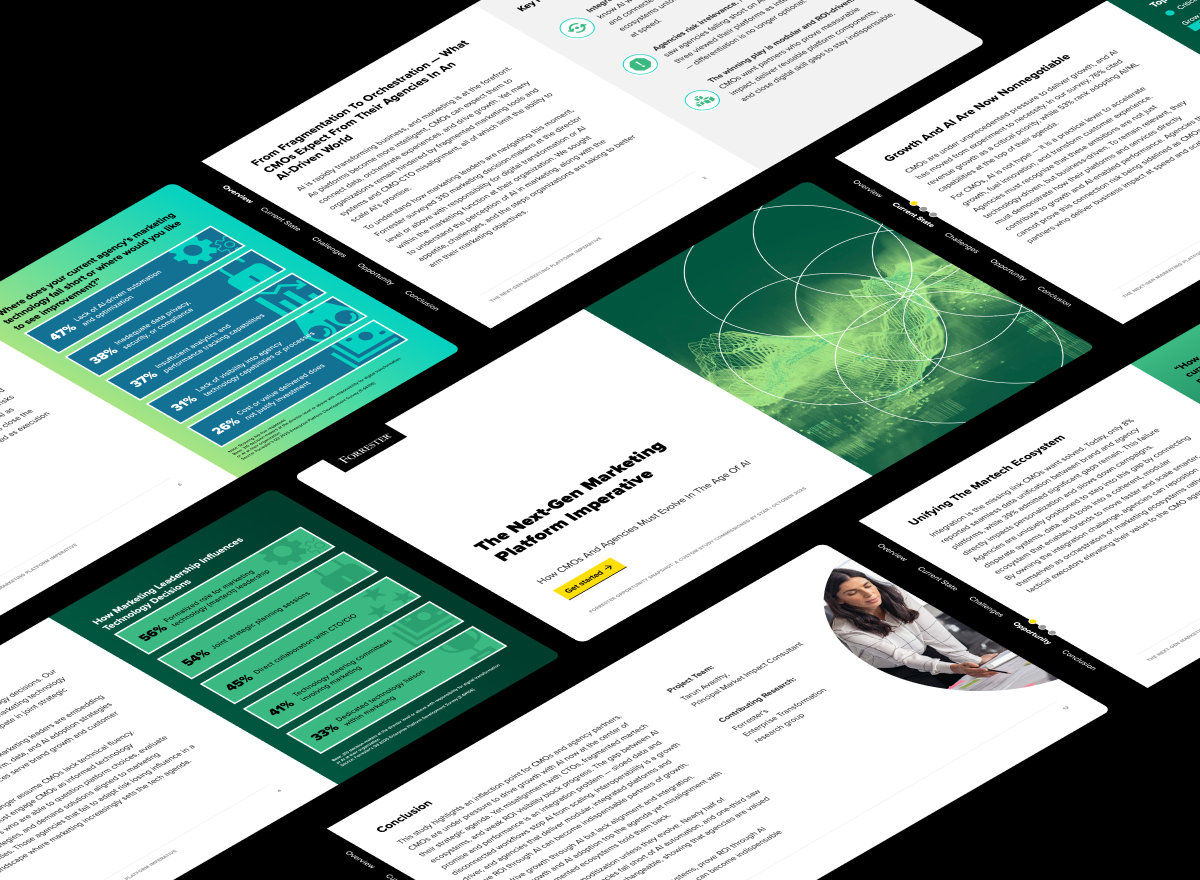Agencies are fueled by a relentless pursuit of innovative solutions to outshine each other. And in today's world, that means one thing: artificial intelligence. The big 5 — WPP, Publicis Groupe, Omnicom Group, Interpublic Group and Dentsu Group — and advertising firms of all sizes are heavily investing and actively experimenting with using AI in advertising to leverage data analytics capabilities, optimize ad targeting and campaigns and deliver personalized ad experiences for better customer engagement.
A number of benefits are already associated with AI in advertising:
- 75% of companies adopting AI for marketing report improved customer engagement
- HOLT CAT managed to lower their cost per hire by 20% through AI-powered campaign personalization
- Last year, 83% of sales teams with AI tools experienced revenue growth, compared to 66% without AI
- Nearly 90% of Fortune 1000 companies are increasing investments in AI for advertising due to its economic promise
- Vanguard achieved a 15% increase in ad conversion rates using AI-generated, highly personalized advertising content.
With that, let's look into the different ways advertising agencies are using generative AI for you to adopt.
How AI is used in advertising
How do you harness AI in advertising to supercharge pitches, cut costs and navigate the challenge of lean budgets, without compromising the creative prowess of your talents?
Start by focusing on these priority areas.
Scaling campaign creation and management
Generative AI can produce ad copy, headlines, descriptions and video scripts based on predefined parameters, allowing advertisers to produce large volumes of creative assets. As a result, WPP’s CEO Mark Read estimates that savings from it can be 10 or 20 times.
Now imagine how this could be multiplied if you use it for scaling across formats, and dimensions – eliminating hours of tedious, manual work. Generative AI can automate multilingual content or be used to generate naming taxonomy within hundreds of subordinate campaigns, giving you consistency across post-campaign analytics and analysis.
But that's just the beginning. AI is a game-changer for advertising campaign quality assurance before launch. Generative AI, armed with the right prompts, can scrutinize ad copy and headlines, catching spelling mistakes, typos and crossing every 't' and dotting every 'i' according to your brand guidelines. This is doubly true for internal models trained on direct agency data.
This is no pie-in-the-sky dream either. It's happening right now in the market. Brandtech Group, the forward-thinking powerhouse, acquired Jellyfish and added Pencil to their arsenal, an unrivaled generative AI content generator and distribution SaaS platform. These strategic moves have created an irresistible one-two punch that will redefine the game for Brandtech Group.
And the best part? Pencil Pro, an enterprise-grade generative AI suite crafted exclusively for heavy-hitting brands, is already making waves. Industry giants like Unilever and Bayer have already jumped on board, with many more big names expected to join in the next year.

By 2032, $1.3 trillion in ad revenue could go towards AI-enabled advertising. Learn about how AI will transform the agency landscape in this panel discussion.
Personalization at fine granularity levels
73% of consumers expect personalized experiences. Generative AI algorithms bring immense value to the realm of personalization in advertising. By dynamically generating content based on individual user characteristics or preferences, advertisers can deliver tailored ads relevant to their target audience, foster lasting connections, and yield higher rates of customer engagement.
An example of AI in advertising is the collaboration between NVIDIA and WPP, which enables their designers to generate diverse, high-fidelity images from text prompts and seamlessly integrates them into scenes. This creates opportunities to scale 1-to-few personalizations as two different specific groups of consumers can be shown ads tailored to their preferences, buyer history and intention to enhance engagement and improve conversion rates.
Furthermore, the adoption of generative AI at scale empowers advertisers to effortlessly adapt to distinctive dialects, slang and varying tone preferences within diverse audience segments. With an impeccable match between tone of voice and audience desires, brands can now strike a resounding chord with their target demographic, delivering a unique resonance that ensures unwavering brand affinity.
Risk prevention and content protection
Many agencies walk a fine line between edge and controversy. But far too often, brands find themselves in hot water because of avoidable mistakes.
Deploying generative AI for negative sentiment risk analysis prevents these situations from happening in the first place. It can validate ad copy, headlines and other collateral for vague or problematic wording that can be misunderstood by the audience or will simply fail to resonate.
For instance, when targeting the Gen Z demographic, generative AI dives deep into social media trends and expertly navigates linguistic subtleties specific to this cohort. That way, your messaging avoids misunderstandings and also effectively connects with and engages this younger audience instead of ending up as a “social media fail.”
Concurrently, generative AI, utilizing semantic similarity, can effectively detect and automatically flag potential violation cases of proprietary materials. This formidable safeguard shields proprietary content, preserves brand exclusivity, and safeguards brand reputation.
Improving campaign performance
Every agency faces the tricky task of maximizing impact on a tight budget. How can AI help agencies make the best use of lean resources without compromising quality?
First, ML and predictive analytics can be harnessed to optimize bidding, enabling advertisers to get more reach at lower costs. AI tracks campaign performance in real time and reallocates budgets to the highest-performing channels and placements, maximizing ROI and lowering the cost per conversion.

Decrease wasted impressions with a
ML-driven bidder and
user-centric stories of video campaigns.
Second, generative AI can be used across campaigns to create multiple ad variations, facilitating A/B testing at scale for advertisers to identify the most compelling ad elements and messages with their audience, ultimately leading to highly optimized and successful ad campaigns.
Interesting examples of AI technology include Dentsu’s partnership with Microsoft to produce AI Playground LATAM. It’s a regionally-focused solution set combining emerging technologies and integrated audience data — bringing their customers increased day-to-day efficiency and operational agility.
Likewise, generative AI can play a powerful role in post-campaign analysis. AI provides agencies a comprehensive look into past campaigns, transforming data into digestible visuals and insights that a wide array of stakeholders can relish.
AI capabilities: Embedded vs enabled
AI in advertising isn't one-size-fits-all. Knowing whether embedded vs enabled AI is right for you seriously matters. The real differentiator is how the AI models are trained, what data they ingest and whether they exist to improve internal agency workflows or deliver client-facing intelligence.
- Embedded AI typically means AI is built deeply into a platform, often to enhance its core functionality or automate workflows. It’s “baked in” and often automates internal workflows and enhances operational efficiency
- Integrated AI refers to AI that is connected or layered onto an existing system, often to provide new capabilities or insights. It can be more modular, allowing for the addition of external AI models (like GPT or Claude) to augment processes or deliver client-facing intelligence
The real competitive edge comes from platforms that can combine proprietary, high-quality data with AI to deliver unique, client-facing intelligence. Proprietary data, such as Acxiom (IPG) or InfoSum (WPP), allows agency platforms to fine-tune models for accurate targeting and personalization in a privacy-first way.
This then creates a “moat” that generic, off-the-shelf AI cannot match. This is why most holding companies are investing heavily in owning and integrating unique data assets into their platforms.
Tailoring your AI in advertising strategy
AI is the ultimate enabler, delivering long-term benefits that outshine the competition. From user behavior analysis to brand perception assessment and even monitoring your competitors’ share of voice, artificial intelligence offers limitless possibilities.
But while 56% of marketers report their companies actively use AI, only 1% have fully recovered their generative AI investment so far.
AI in advertising requires tailoring your strategy accordingly. And here's the secret to AI success: it all comes down to your data. The right data set, meticulously processed and seamlessly segmented, fuels your strategy like never before. This approach is particularly crucial for first movers, who can undergo specialized training within a controlled sandbox environment.
First movers can develop a deep understanding of the process by allowing them to experiment with different data segmentation techniques and refine their strategies. This initial training phase enables this group of users to identify potential challenges and solutions, laying the groundwork for a smoother implementation when the approach is eventually scaled to all teams.
Harness the true potential of AI for your agency. Discuss the opportunities that lie ahead with Star Media & Advertising.





